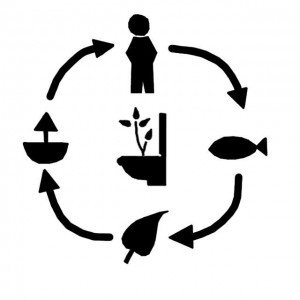المقدمة
نظرًا لغياب سياسات إعادة التوطين في البلدان المضيفة والأزمات المستمرة في بلاد المنشأ، يجد اللاجئون والمشردون داخليًا أنفسهم في انتظار أسابيع وأشهر وسنوات وربما عقود في المخيمات التي كانت تعتبر في البداية تدبيرًا مؤقتاً. وفي مثل هذه مخيمات النازحين طويلة الأمد ، يجب أن لا تستمر خدمات الصرف الصحي في منع الأمراض المعدية والأوبئة وضمان صحة جيدة وكرامة فحسب، بل يجب عليها أيضا أن تدعم الاكتفاء الذاتي للمستفيدين بشكل متزايد، ويجب أن تتجاوز نطاق الحد الأدنى من المعايير. ومع ذلك، لا تزال معايير الحد الأدنى مشروع أسفيرالمتعلقة بالصرف الصحي ذات صلة بمناطق المخيمات طويلة الأمد:
- أسفير والمياه والصرف الصحي والنظافة الصحية المعيار 1: تصميم وتنفيذ برنامج المياه والصرف الصحي والنظافة الصحية. تتم تلبية احتياجات السكان المتضررين من المياه والصرف الصحي والنظافة الصحية ويشارك المستخدمون في تصميم المرافق وصيانتها عند الحاجة. وتحدد مؤشرات تحقيق هذا المعيار العدد المطلوب من الأسر المعيشية لكل مرحاض.
أسفير والتخلص من الفضلات المعيار 1: بيئة خالية من براز الإنسان. بحيث تكون البيئة المعيشية بشكل عام وخاصة المساكن ومناطق إنتاج الغذاء والمراكز العامة والمناطق المحيطة بمصادر مياه الشرب خالية من التلوث البرازي البشري.
أسفير والتخلص من الفضلات المعيار 2: مرافق مراحيض مناسبة وكافية. بحيث يمتلك الناس مرافق مراحيض مناسبة ومقبولة، قريبة من مساكنهم بما فيه الكفاية، للسماح بالوصول السريع والآمن في جميع الأوقات ليلًا ونهارًا.
أسفير والصرف الصحي المعيار 1: أعمال الصرف الصحي. بحيث يكون لدى الناس بيئة تهدد فيها المخاطر الصحية والمخاطر الأخرى الناجمة عن تآكل المياه والمياه الدائمة، بما في ذلك مياه الأمطار، ومياه الفيضان، ومياه الفضلات المنزلية، ومياه الصرف الصحي من المرافق الطبية.
ينبغي تصميم نظم الصرف الصحي بحيث يكون لها أثر يتجاوز الأزمة المباشرة ولمنع حدوث المزيد من حالات الطوارئ (اللجنة الأوروبية 2014). كما يجب أن ينصب تركيز التدخلات في مناطق المعسكرات طويلة الأمد على فعالية التكاليف وجودة ومتانة الخدمة و / أو استبدال أو ترقية الخدمات المؤقتة. إن التشغيل والصيانة الكافيان أمران حيويان لتجنب تدهور أنظمة الصرف الصحي. وبما أن نظم الصرف الصحي يجب أن تكون قادرة على تحمل ما بعد مرحلة الطوارئ، فإن تصميم وتنفيذ وصيانة الحلول المقترحة ينبغي أن يكون مملوكًا من قبل المستفيدين.
ويعرض القسم أدناه مجموعة مختارة من أنظمة الصرف الصحي والتقنيات المناسبة لضبط مخيمات النازحين طويلة الأمد . على الرغم من إجراء الاختيار بواسطة الخبراء، إلا إنه يجب على الممارسين النظر دائمًا في إطارات الظروف البيئية والتقنية والمالية والاجتماعية والاقتصادية عند اختيار التقنيات. وللحصول على المجموعة كاملة من نظم وتكنولوجيات الصرف الصحي المتاحة، يرجى الرجوع إلى الخلاصة الوافية لنظم وتقنيات الصرف الصحي بواسطة تيلي وآخرون.
A review of water and sanitation provision in refugee camps in association with selected health and nutrition indicators – the need for integrated service provision
International Organization for Migration (IOM), Norwegian Refugee Council (NRC) and UN Refugee Agency (UNHCR)`s Camp Management Toolkit provide tools and approaches to provide concrete guidance on facilitating hygiene improvement in an acute, early stage of an emergency relevant to camps. This toolkit is applicable to both IDPs and refugees living in communal settings.
CRONIN, A. ; SHRESTHA, D. ; CORNIER, N. ; ABDALLA, F. ; EZARD, N. ; ARAMBURU, C. (2008): A review of water and sanitation provision in refugee camps in association with selected health and nutrition indicators – the need for integrated service provision. المُدخلات: Journal of Water and Health: URL [Accessed: 26.10.2016]Water, Sanitation and Hygiene. Meeting the challenge of rapidly increasing humanitarian needs in WASH. DG ECHO Thematic Policy No.2
This thematic policy document provides information on meeting the challenges of rapidly increasing humanitarian needs. It provides information on basic principles of humanitarian response, emergency response and preparedness and response in acute, post-acute, protracted, and chronic crises, key determinants for interactions, guidance on coordination, advocacy, decision trees, and technical guidelines. It provides various insights on operations and maintenance planning for humanitarian crisis needs. The EC humanitarian WASH assistance follows the following objectives: 1) To ensure timely and dignified access to sufficient and safe WASH services for populations threatened by on-going, imminent or future humanitarian crises, and to increase their resilience to withstand water stress and shocks. 2) To implement measures to prevent the spread of WASH related diseases in populations threatened by on-going, imminent or future humanitarian crises. 3) To enhance the impact, relevance, efficiency and effectiveness in the delivery of WASH assistance by strengthening the capacities of the humanitarian aid system, including its coordination mechanism.
EUROPEAN COMMISSION (2014): Water, Sanitation and Hygiene. Meeting the challenge of rapidly increasing humanitarian needs in WASH. DG ECHO Thematic Policy No.2. Brussels: European Commission URL [Accessed: 31.10.2016]Compendium of Sanitation Systems and Technologies. 2nd Revised Edition
This compendium gives a systematic overview on different sanitation systems and technologies and describes a wide range of available low-cost sanitation technologies.
TILLEY, E., ULRICH L., LÜTHI, C., REYMOND P. and ZURBRÜGG C. (2014): Compendium of Sanitation Systems and Technologies. 2nd Revised Edition. Duebendorf, Switzerland: Swiss Federal Institute of Aquatic Science and Technology (Eawag) URL [Accessed: 03.05.2023] PDFThe Sphere Handbook
This appendix of SPHERE handbook is a water supply and sanitation initial needs assessment checklist. This list of questions is primarily for use to assess needs, identify indigenous resources and describe local conditions. It does not include questions to determine external resources needed in addition to those immediately and locally available.
THE SPHERE PROJECT (2011): The Sphere Handbook. Rugby: Practical Action Publishing URL [Accessed: 19.10.2016]
